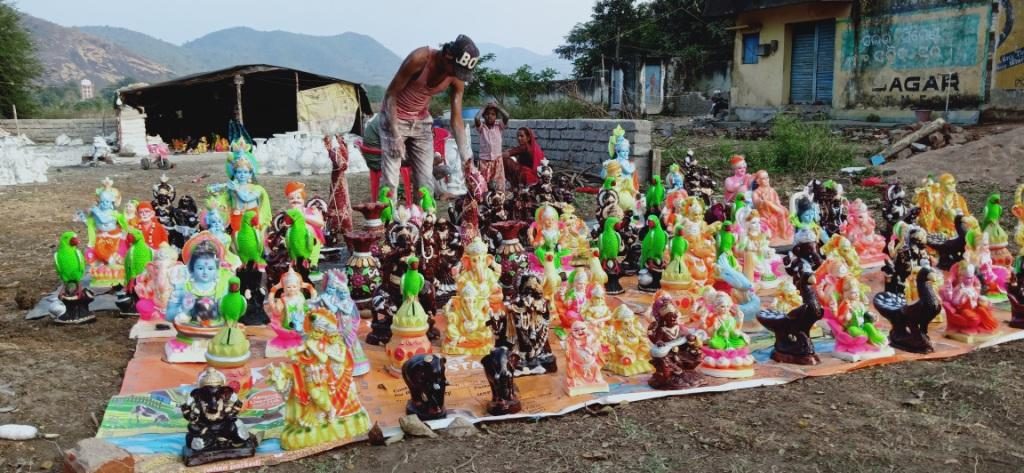Raygada: Even though summer is still a couple of months away, the demand for earthen pots has peaked in this district. However, traditional potters of Rayagada district have little to cheer. Flooding of markets by fancy pots by potters from Rajasthan has pushed the wares of local potters out of favour.
While potters of the district often migrate to various regions of the country to do manual labour, potters from Rajasthan have captured the markets in the district.
A variety of fancy earthen items of different sizes, colours and designs are sold in large numbers in local markets of the district. These items have posed a challenge for local potters who have been eking out a living from earthen products.
Potters of Rajasthan use a mixture of plaster of paris and soil to make their products which is environment friendly. They prepare terracotta products like tea cup sets, decorative pieces, animal figures, fish, mobile stands, vases, piggy banks and idols of deities, among others.
Dhanraj Seth, a Rajashthani seller, said the figures of horses have high demand in the market. Many people buy this horse to decorate their homes. Rajasthan potters have occupied the Bhakurguda place in the district where they are busy making their earthen items. These products carry a price band of Rs 25 to Rs 500.
“We make profits of about Rs 1000 a day. We make huge profits from earthen items during puja times,” said Gopal Rador, a potter.
Traditional potters of the district also make earthen pots. By selling them, they earned enough for their living. Now, they struggle to save their occupation in the face of fancy earthen products.
“Earlier we had much work. But gradually, our business has slowed down as there are no takers for our products. Earthen products from other areas have many takers. We are caught in such a situation that we can neither give up nor sustain this occupation,” lamented Sudhakar Behera, a potter of the district.
“Whatever we earn now is too meager to meet our both ends meet,” other potters said. Some traders buy our earthen items, but they do not pay right prices, they noted.
By using technology, potters outside the state make attractive earthen items which have high demand in the market. However, rural artisans have no access to such technology.
To compete with the market, rural potters need to be acquainted with the new technology so as to save their age-old occupation, some potters observed. They urged the government to take proper steps to promote the traditional earthen products of the district so that they can save their profession.
